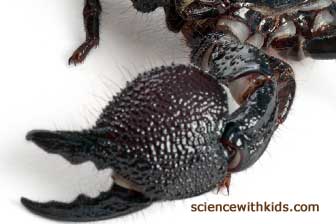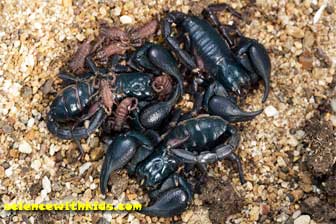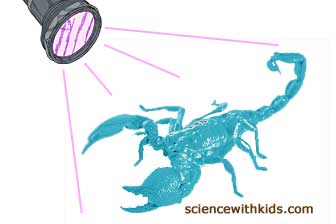Facts about Scorpions
Posted by Admin / in Science Facts
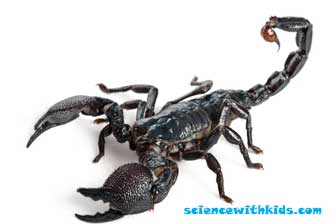
Scorpions are very mysterious. Learn some interesting facts about scorpions.
Scientific Facts about Scorpions
- Scorpions are not insects. In fact, scorpions are arachnids, which are animals. Other types of arachnids include spiders, ticks and mites.
- Scorpions have eight legs, similar to spiders.
- Scorpions do not have bones, but instead have a hard outer shell, known as an exoskeleton.
- There are over 2000 different known types of scorpions.
- Most scorpions are found in Africa, the Middle East, the United States and Mexico.
- Scorpions survive by building burrows underground or live under rocks.
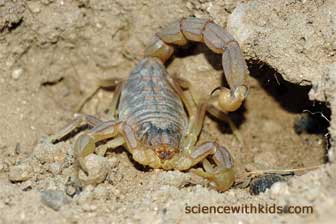
This yellow desert scorpion escapes the daytime heat of the desert by living in a burrow underground.
Types of Scorpions
- Overall, there are more than 2000 types of scorpion identified by scientists.
- Most scorpions live in warm climates.
- Scorpions found in deserts are typically yellow or light brown in color. Scorpions found in mountain or forest areas are typically dark brown or black in color.
- Just more than 30 types of scorpions have enough dangerous venom in their sting to kill a human. Most scorpion stings are no worse than a bee sting.
- In the United States the only native type of scorpion that is deadly is the Arizona bark scorpion, found in the Southwest United States and in Mexico.
- The largest scorpion is the Emperor scorpion. They are black to dark brown. Emperor scorpions are found in tropical West Africa. Fully-grown, the average size of an Emperor scorpion is 8 inches (20 centimeter) long.
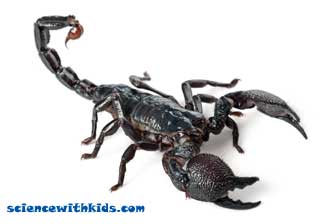
Interesting Facts about Scorpions
- Scorpions have a curved segmented tail that points towards their head. The tip of the tail has a sharp stinger on the end.
- Scorpions with larger, more powerful pinchers rely less on their stinger and their poison is less powerful. Scorpions with smaller pinchers need to rely more on their poison for protection and to help them catch their prey. Scorpions with small pinchers are typically the most dangerous.
- Scorpions see best at night, which is when they are active search for food. Their eyesight, however, is not very good. Their legs contain tiny hairs with sensory cells that can detect vibrations from insects and animals within 3 feet (1 meter). These sensory hairs also help them navigate and detect trouble in the dark.
- Baby scorpions ride on their mother's back for about a week. Then they are able to survive on their own.
- In 1954 scientists discovered that scorpions give off a glow of light when exposed to ultraviolet (UV) light. Scorpions cannot see UV light so it allows scientists to study scorpions during their normal routines. People who need to navigate at night through desert areas where scorpions live can also use UV lights to help them avoid the dangerous creatures.
- Scorpions do not generally eat very often. After eating a meal, they may not eat again for several weeks. Some scorpions are able to survive over a year without eating. Scorpions are able to stay underground and use very little energy if they need to survive.
- Scorpions eat insects, small lizards, spiders and mice. Scorpions, however, mostly eat other scorpions. They are not very picky and will even eat their own type of scorpion.
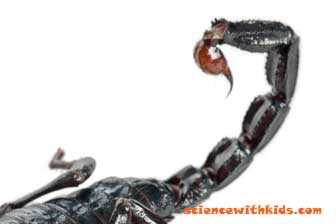

This yellow scorpion found in Western Africa has a venom powerful enough to kill a person. Notice its small pincher size.
